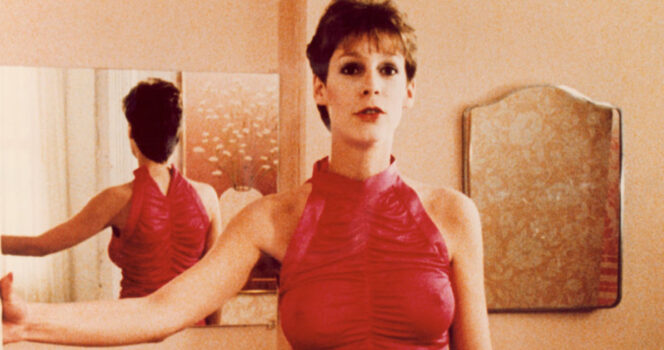Why Trading Places is a Holiday Gem That Stands the Test of Time
When it comes to holiday movies, few manage to capture both heart and hilarity as well as Trading Places. Released in 1983, this sharp comedy is more than just a product of its time—it’s a timeless classic that blends humor, social critique, and unforgettable performances. Despite its brilliance, it often flies under the radar when people discuss Christmas films. But for many fans, Trading Places is the ultimate holiday movie, and here’s why.
A Perfectly Cast Trio

Eddie Murphy and Dan Aykroyd share an on-screen chemistry that’s simply electric. It’s almost a crime that Hollywood didn’t pair these two comedic legends in more projects. Murphy, fresh off his rise to stardom, delivers a performance full of charm and wit, while Aykroyd’s portrayal of the uptight Louis Winthorpe III is razor-sharp. Add Jamie Lee Curtis into the mix, and you have a cast that’s nothing short of iconic. At just 25 years old, Curtis not only dazzles with her beauty but proves her acting prowess with a role that’s both smart and endearing.
A Movie Born of a Simple Idea
The story’s origins are as intriguing as the film itself. Screenwriter Timothy Harris once played tennis with two wealthy, overly competitive brothers who would bicker incessantly. This dynamic inspired Harris to team up with Herschel Weingrod to create a screenplay centered on the age-old debate of nature versus nurture. The result? A hilarious and thought-provoking tale of two lives swapped in a wild social experiment.
The Plot That Keeps Giving

At its core, Trading Places explores what happens when a spoiled, upper-class executive, Louis Winthorpe III, and a street-smart hustler, Billy Ray Valentine, have their lives turned upside down. Thanks to the scheming Duke brothers, Louis loses everything—his job, wealth, and social standing—while Billy Ray takes his place in high society. But when the unlikely pair discover they’re pawns in the Dukes’ twisted game, they team up with Ophelia (Curtis) to exact revenge. Beneath the laughs lies a poignant commentary on class, greed, and human potential—a message that’s just as relevant today as it was in the ‘80s.
Behind-the-Scenes Magic

Some of the film’s funniest moments were pure accidents. For example, Don Ameche’s fumbling with a money clip wasn’t scripted, but the actors stayed in character, making the scene even more memorable. Another hidden gem? A shot of the iconic Rocky statue during the opening montage, subtly tying the film’s Philadelphia setting to a symbol of resilience and triumph.
Casting What-Ifs
Originally, the movie was envisioned with comedy icons Richard Pryor and Gene Wilder in mind. When that pairing didn’t pan out, director John Landis turned to Dan Aykroyd and Eddie Murphy. Landis had worked with Aykroyd before but was unfamiliar with Murphy, whose breakout film, 48 Hours, hadn’t yet been released. Studio executives, however, saw Murphy’s potential and insisted he be cast. It’s safe to say their gamble paid off—Murphy’s performance cemented his status as a Hollywood heavyweight.
Jamie Lee Curtis’ Breakout Moment
Jamie Lee Curtis’s role as Ophelia marked a turning point in her career. Known primarily for horror films, she seized the opportunity to showcase her range in a big-budget comedy. While her decision to film a topless scene was controversial, it undeniably contributed to her rising star. Years later, Curtis reflected on the experience with mixed feelings, acknowledging the scene’s impact while admitting she’d never take on such a role today.
Real-Life Inspiration and Legacy

The Duke brothers, played by Ralph Bellamy and Don Ameche, were inspired by the wealthy siblings Harris encountered in real life. Interestingly, their portrayal as clueless elites helped solidify their roles as some of cinema’s most detestable yet entertaining villains. Their characters even made a cameo in Eddie Murphy’s Coming to America, where they appear as homeless men given a second chance by Murphy’s Prince Akeem.
A Nod to Real-World Impact
The film’s depiction of insider trading was so impactful that it inspired a real-life financial regulation known as the “Eddie Murphy Rule,” aimed at preventing market manipulation. Ironically, Murphy himself admitted he barely understood the commodities trading scenes he performed, proving once again that his comedic genius transcends technical details.
A Comedy That’s Unmatched
Trading Places is more than just a comedy; it’s a cultural artifact that continues to resonate. From its sharp social commentary to its unforgettable performances, the film remains as fresh and relevant as ever. Whether you’re rediscovering it this holiday season or watching for the first time, it’s a reminder of what makes movies great—heart, humor, and a touch of magic.
So, next time you’re debating which holiday film to watch, consider this underappreciated gem. With its perfect mix of laughs and life lessons, Trading Places deserves a spot at the top of your list.
